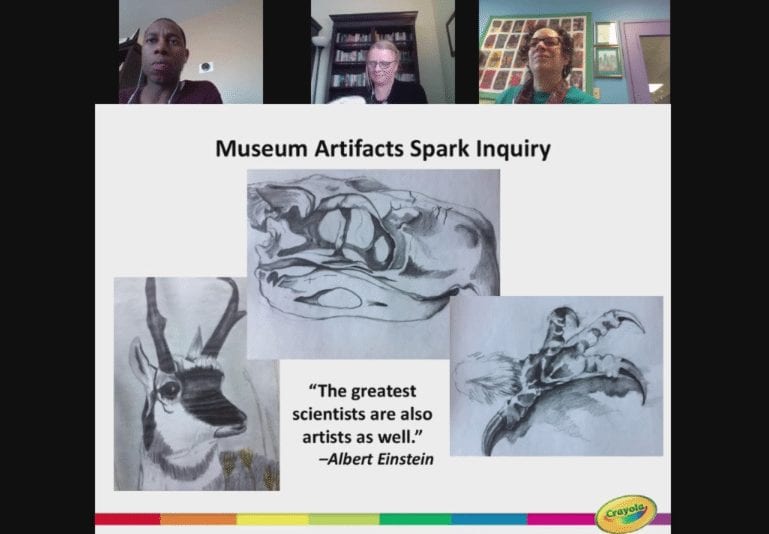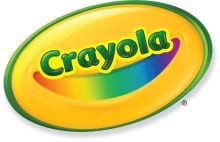Six Strategies for Implementing STEAM as Your School’s New Approach to Learning
STEAM (Science, Technology, Engineering, Art, and Mathematics) has become more prominent as an effective approach to interdisciplinary learning. However, implementation is not as simple as following a new curriculum or purchasing materials. During the edWebinar “STEAM: Innovations That Solve Real World Problems,” Cheri Sterman, Director of Education, Crayola; Lucie Howell, Director of Learning and Engagement, The Henry Ford; and James Wells, Innovative Teaching & Learning Manager, Crayola, explained the movement’s genesis and offered strategies for a successful transition.
- STEAM is a guided approach to exploratory learning where teacher-talk is at a minimum and students drive interaction and discovery. Implementation, though, is not about lessons, units, or even just adding a few elements of science into art or vice versa. Embracing it means a commitment to a new way of teaching and learning, and this new language must be spoken across all classrooms.
- Schools can start small, but it must be more than one teacher. Individuals from each content area should form a Creative Leadership Team to investigate best practices and work together to develop a model that will work in their school. Once the leadership team feels confident in their knowledge, they will become coaches for their colleagues.
- At the same time, administrators need to provide teachers with proper support – both time and resources. Administrators should create opportunities for teachers to co-plan curriculum and encourage frequent check-ins, perhaps even daily, to ensure consistent implementation. In addition, school leaders can play a vital role in community partnerships, e.g., museums, to expand their STEAM network.
- Within the classroom, lessons should shift from teachers standing in front of the classroom and telling students what they need to know to student-centered learning. Students should be asked to contemplate real world problems, research the issues, and collaborate on solutions that utilize knowledge across disciplines. The result is a louder, messier journey, but one that empowers students and engages them in their own education.
- Expectations for assessments then, too, should change. Rather than textbooks and tests, authentic assessments are based on process and artifacts. Again, the path to the solution becomes as important as the solution itself.
- Begin with something fun and accessible, but in order to maintain momentum, teachers and administrators must have a growth mindset. Celebrate the wins, learn from mistakes, and keep planning new projects.
“It could begin in a shared space, like a makerspace,” said Cheri Sterman, “But ultimately you know STEAM is alive and well when it is infused into the regular day in every classroom in every learning space, not in some special treat you get to go down the hall and do once a week.”
This broadcast was hosted by edWeb.net and sponsored by Crayola.
This article was modified and published by eSchool News.
About the Presenters
Cheri Sterman is the Champion Creativity edWebinar series presenter and the director of education at Crayola. “Bringing colorful wings to the invisible things that live in the hearts and minds of children” defines Cheri’s career. Cheri helps educators understand creativity and build their creative capacity. She translates research and best practices into professional development resources. Cheri has served on the executive boards of the: Partnership for 21st Century Skills, National Association for the Education of Young Children, and National Child Development Council. Prior to joining Crayola Cheri taught child development at the University of Cincinnati and Sinclair College in Ohio. She served as a consultant to the National Governors Association, White House Commission on Children and Youth, Children’s Defense Fund, and the President’s Committee on the Arts and Humanities Turn-Around Schools Initiative.
Lucie Howell is the director of learning and engagement at The Henry Ford in Michigan. She previously served as STEM Director at Teach for America, and the STEM teaching & learning director at Quinnipiac University in Connecticut.
James Wells is the innovative teaching and learning manager at Crayola. He previously served as Fine Art Supervisor for Shelby County School District in Memphis, Director of Arts Access for the Tennessee Arts Commission in Nashville, and Education Programs Manager for the Culture & Heritage Museums in South Carolina.
Join the Community
Champion Creativity: The Power of Art-Infused Education is a free professional learning community that helps principals, art teachers and other teacher leaders build creative capacity schoolwide
This broadcast was hosted by edWeb.net and sponsored by Crayola.
Art-infused education builds 21st Century skills. Crayola helps parents and educators raise creatively alive children.





Comments are closed.